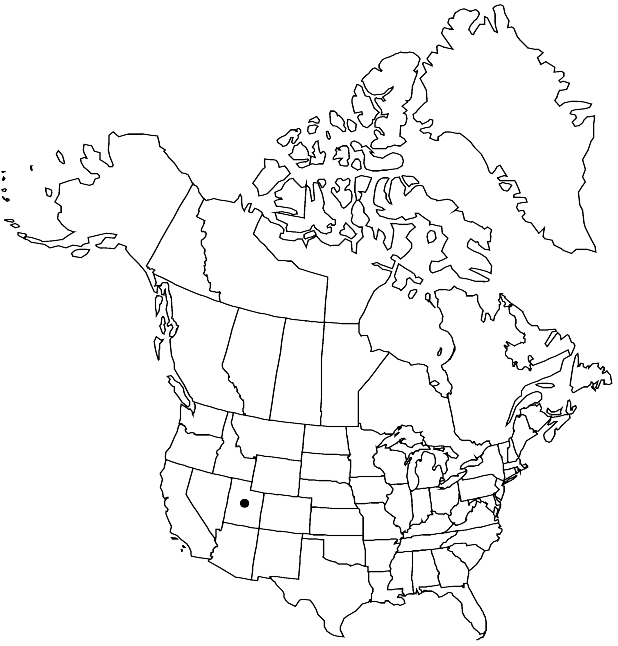Draba maguirei
Revis. Drabas W. N. Amer., 70, plate 5, figs. 37a–c. 1941.
Perennials; (cespitose, forming loose mats); caudex branched (with some persistent leaf bases, branches often creeping, sometimes terminating in sterile rosettes); scapose. Stems unbranched, (0.4–)0.7–1.7(–2.2) dm, usually glabrous, rarely proximalmost parts and sterile shoots pubescent, trichomes short-stalked, 2–4-rayed, 0.2–0.5 mm. Basal leaves rosulate; sessile; blade oblanceolate, (0.5–)0.7–1.4(–2) cm × 1.5–3.5(–5) mm, margins entire, surfaces pubescent with stalked, cruciform, and 2- or 3-rayed trichomes, 0.2–0.6 mm, (sometimes trichomes only on margins or apex, not ciliate, midvein obscure abaxially). Cauline leaves 0. Racemes 5–18(–23)-flowered, ebracteate, elongated in fruit; rachis not flexuous, glabrous. Fruiting pedicels divaricate-ascending to ascending (not expanded basally), straight, 5–13(–18) mm, glabrous. Flowers: sepals ovate, 2.5–4 mm, glabrous; petals yellow, oblanceolate, 5–7 × 2–3 mm; anthers ovate, 0.5–0.6 mm. Fruits broadly ovate to lanceolate, plane (not curved), flattened, (3–)4–6.5(–8) × 2–3 mm; valves glabrous or puberulent, trichomes simple, 0.05–0.2 mm; ovules 4–8 per ovary; style 0.6–1.7 mm. Seeds ovoid to oblong, 1.6–2 × 1–1.3 mm. 2n = 16, 32.
Phenology: Flowering May–Jul.
Habitat: Dolomite outcrops, talus, rocky slopes
Elevation: 1600-2900 m
Distribution

Utah.
Discussion
Draba maguirei is known from the Bear River Range in Cache County. Despite this very narrow distribution, the species includes two ploidy levels (diploid and tetraploid) that are morphologically and ecologically distinct (M. D. Windham, unpubl.).
Selected References
None.